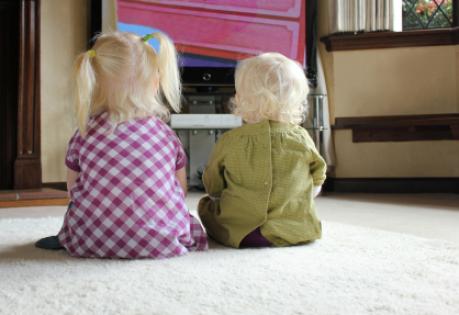Researchers in Seattle took an 'if you can't beat them, join them' approach in trying to address the issue of how much time children, including toddlers, spend in front of a screen – which may include TV, tablets or computers.
While experts suggest that children shouldn’t be watching more than two hours a day, the Australian child spends more than double that parked in front of some form of screen daily (excluding school time). Campaigns to reduce this screen time have been only minimally successful.
So by shifting the focus away from how much youngsters watch and concentrating instead on what they’re seeing, the researchers report in the journal Pediatrics on their success in helping parents increase the time kids spent watching educational programming. The result? Better-behaved children.
“There is no question kids watch too much television at all ages,” says Professor Dimitri Christakis, lead author and director of the Center for Child Health, Behaviour and Development at Seattle Children’s Research Institute and Professor of Pediatrics at the University of Washington.
“Part of the message is not just about turning off the television but about changing the channel.”
Professor Christakis conducted extensive research on the effects of screen time on child development and explored ways to influence what shows children watch so that they’re more apt to imitate quality conduct.
“We’ve known for decades that kids imitate what they see on TV and now on computer games and the like,” he says. “They imitate good and bad behaviour.”
In the study, he and his colleagues tracked 617 families with kids between the ages of 3 and 5. Half of the families agreed to go on a media ‘diet’ and swap programming with more aggressive and violent content for educational, pro-social shows that encourage sharing, kindness and respect, like Dora the Explorer, which teaches how to resolve conflicts, and Sesame Street which models tolerance for diversity. The other families did not change their children’s viewing choices.
To help parents in the first group to choose appropriate shows, they received a program guide that highlighted pro-social content and learned how to block out violent programming. They were also urged to watch alongside their kids. The researchers tracked what the children watched and also measured their behaviour with standard tests of aggressiveness and sharing responses six months and a year into the study.
At both testing periods, the children in the first group watched less aggressive programming than they did at the beginning of the study compared with children in the control group. Both groups of kids increased their screen time marginally, but the first group saw more quality programs while the control group spent even more time watching violent shows.
Six months after the study began, the children who increased their pro-social viewing acted less aggressively and showed more sharing and respectful behaviour compared with the control group. They were more apt to compromise and cooperate than children who didn’t change their viewing content, and the effects persisted for the entire year that the study lasted.
“There is a connection between what children watch, not just in terms of violence but in terms of improved behaviour,” says Professor Christakis.
Who got the biggest boost?
“Low-income boys. They derived the greatest benefit, which is interesting because they are most at risk of being victims and perpetrators of aggression,” he says.
Many of the parents were so delighted with the guidance that they asked to continue receiving program guides even after the study ended.


















__small.png)










